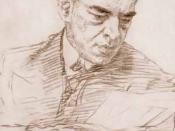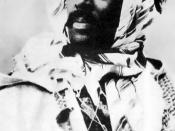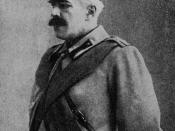Konstantin Sergeievich (Alekseiv) Stanislavski was born to a family of wealthy industrialists and in 1881 began his service in the family firm, but soon his captivation with the theater overcame him. His first stage appearances date back to 1877: he played in dramas, comedies and operettas at the Alekseiv amateur theater built on his family estate, and took plastics (stage movement) and vocal lessons from Moscow's best teachers. 1884 marks the public debut of Konstantin Stanislavski--a name he adopted from a Polish Ballerina in hope of keeping his theater aspirations hidden from his family. In 1888 Stanislavski, jointly with Komissarzhevski and Sollogub, founded the Moscow Society of Arts and Literature, while still being forced to work in the family business. It was here that Stanislavski initially tested himself as a stage director. After his father's death in 1893 he was able to free himself from the binds of the family business and totally dedicate himself to the theater.
Although Stanislavski died in 1938, his theories of "method acting" which are explained in his three books "An Actor Prepares", "Building a Character" and "Creating a Role" are still one of the greatest influences in the world of performance today.
The most fundamental principle of Stanislavski's teaching is that the actor must live the life of the character that he is portraying, he must learn to think like the character and behave as the character would, therefore the portrayal is not confined to the performance but will, to some degree, begin to overlap into the actor's own life. This, he asserts, is the only way to achieve total realism and, to reinforce this, the actor must also extend this exercise of imagination to encompass the costumes that he wears, the articles that comprise the set and the props that are used.


